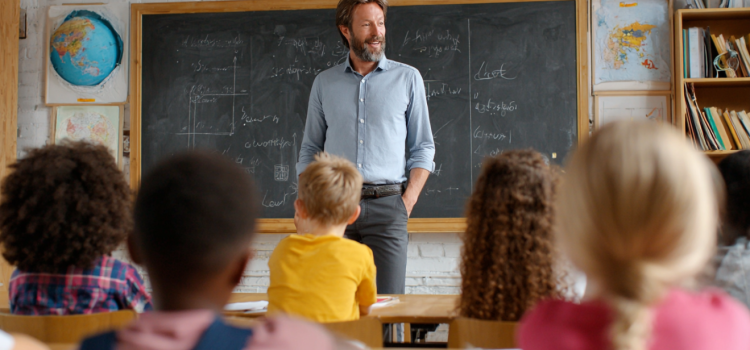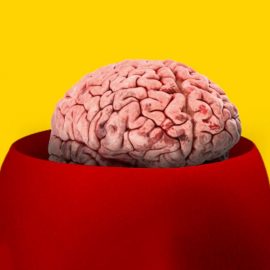
What if all of our ideas about teaching are wrong? How can teachers create truly effective lesson plans?
Teachers and students alike often struggle. In Uncommon Sense Teaching, Barbara Oakley and Beth Rogowsky team up with neuroscientist Terrence Sejnowski to explain how your brain actually processes and stores information. They also provide practical, science-based strategies to help you harness your brain’s natural learning mechanisms.
Continue reading for an overview of the book, including exercises to help you apply the book’s principles to your own teaching.
Uncommon Sense Teaching Book Overview
In Uncommon Sense Teaching (2021), learning experts Barbara Oakley and Beth Rogowsky team up with neuroscientist Terrence Sejnowski to explore how recent breakthroughs have overturned old assumptions about how the brain works and how people learn. The authors offer this wisdom to teachers, promising to help them teach more effectively—but their practical, science-based strategies can help anyone learn how to work with their brain’s natural mechanisms. Whether you’re a teacher or just looking for some better study skills, this guide will explain how to learn effectively and with minimal stress.
Oakley is a professor of engineering at Oakland University and a prominent voice in learning science. She’s best known for her bestselling book A Mind for Numbers, which describes how she went from failing high school math to earning a Ph.D. in systems engineering, with advice to readers on how to master similarly difficult subjects.
Rogowsky is an associate professor at Bloomsburg University, where she teaches courses on the principles of education and adolescent literacy. She has also conducted extensive research to debunk popular learning myths and identify effective teaching methods. Her work has appeared in publications ranging from the Journal of Educational Psychology to Time magazine.
Finally, Sejnowski is a neuroscientist at the Salk Institute for Biological Studies. He has spent decades mapping how the brain creates and adapts connections—in other words, how it learns—bridging the gap between neuroscientific research and practical educational applications.
We’ll begin this guide by explaining how learning works in a neurological sense and exploring how connections between brain cells give rise to new memories. We’ll then discuss the two main systems your brain uses to learn new information: the declarative system for conscious learning and the procedural system for reflexes and habits. We’ll conclude by exploring various ways to create a healthy and effective learning environment for others.
Our commentary will go into greater detail about the scientific reasons behind the authors’ methods. We’ll also compare and contrast their ideas with those of other influential educational books, such as Jim Kwik’s Limitless and Oakley’s A Mind for Numbers. Finally, we’ll suggest some actionables to help you improve your learning and teaching skills.
How the Brain Creates Memories
Learning about any new subject begins with memorizing fundamental facts or skills, so Oakley, Rogowsky, and Sejnowski start by explaining how memory works. In this section, we’ll first describe how your brain creates memories by forming connections between neurons (brain cells). We’ll then discuss the two different types of memory, paying special attention to working memory. Finally, we’ll explain the natural differences in people’s working memory capacities, and how those differences lead to unique strengths and weaknesses when it comes to learning.
Memories Come From Neural Connections
Oakley, Rogowsky, and Sejnowski say that memories are the result of physical connections within the brain—which is to say, neurons linking to one another. These links enable neurons to activate in sync, allowing you to recall the information you need. Neural connections strengthen the more you use them and weaken if you neglect them, which is why it’s easy to remember a skill you use frequently, but difficult or impossible to recall a piece of trivia you heard only once long ago. This also implies that practice and repetition really do help you remember what you’ve learned, because they strengthen neural connections.
Another implication of neuroplasticity is that you can create stronger memories—in other words, you can learn more effectively—by deliberately linking new information to things you already know, creating a network of connections. For the brain, it’s easier to build upon existing connections than it is to create new ones from scratch. To illustrate this idea, imagine an electrician adding a new outlet to an existing electrical circuit, as opposed to assembling an entirely new circuit.
The Two Kinds of Memory
While all memories form using the same fundamental process (neurons making connections with one another), Oakley, Rogowsky, and Sejnowski add that people have two distinct types of memory, each with different functions.
The first system is working memory, also called short-term memory. As the name suggests, this system is for knowledge you’re currently working with—either learning it or applying it to a problem. The authors say that working memory has an extremely limited capacity and can only hold about four pieces of information at a time. As new thoughts grab your attention and enter your working memory, they push out any pieces of information you’re not actively thinking about. If that information hasn’t yet been added to your long-term memory, you’ll forget it.
In contrast with working memory, long-term memory can hold vast amounts of knowledge, and can do so for many years if the neural connections are strong enough. However, this type of memory only acts as a storage system—your working memory has to retrieve the information from long-term storage to use it.
For example, you’ve probably had times when you’ve forgotten why you came into a room. This happens when you have a specific piece of information in your working memory (the reason you went to that room), then something distracts you so that you stop thinking about it. Once that reason is gone from your working memory, you’ll struggle to remember it and may need to retrace your steps from the last thing you do remember: the most recent piece of information that made it into your long-term memory.
If you want to store knowledge in your long-term memory, the authors suggest using retrieval practice: Try to actively recall information without looking at notes or other reference materials. For example, you might try explaining a concept to someone else, solving problems from memory, or writing a summary of the key points you remember about a topic. Such practices will also serve to strengthen the relevant connections, helping you recall that information more easily next time.
Differences in Working Memory
Although a person’s working memory can hold about four pieces of information, Oakley, Rogowsky, and Sejnowski clarify that this is only an average—some people can hold six or more items in their working memory simultaneously, while others struggle to manage even three. Note that this is purely due to neurological differences and has nothing to do with intelligence or effort.
If you have a relatively large working memory capacity, then you can process a lot of information very quickly—you’re probably the first one to come up with an answer to a question or problem. However, the authors warn that such mental efficiency can also work against you. Things seem to come very easily to you, and you’re likely to think that you understand topics before you’ve put in sufficient study. As a result, you might fail to build up strong long-term memories and find yourself unable to retrieve that knowledge later.
On the other hand, if you have a smaller working memory capacity, you may appear to be a slow learner: You can’t immediately use what you’re learning, and you might take longer than your peers to solve problems. However, the authors say that people with smaller working memory capacities tend to develop robust and flexible long-term memories. After all, if a topic doesn’t immediately seem clear to you, then you’ll likely feel the need to keep reviewing and practicing it. So, while you might not seem to think as quickly as most people, your memory is probably much more reliable.
The Brain’s Two Learning Systems
We’ve talked about the different types of memory, but what drives your brain to create those memories in the first place? The authors say you also have two systems for learning different types of information. We’ll start by discussing the declarative system, which is for deliberate learning: memorizing facts, understanding complex topics, and so on. We’ll then describe the procedural system, which deals with skills and habits that don’t require conscious thought.
The Declarative System: Conscious Learning and Recall
The first system Oakley, Rogowsky, and Sejnowski discuss is the declarative learning system: the neural pathways for learning and applying factual information. They say this pathway is a collaboration between your working memory and two specific parts of your brain, and understanding how those parts work together will help you both learn and teach more effectively.
When you encounter new information, your working memory captures it and sends it to your hippocampus and neocortex. The neocortex forms neural connections to store your new knowledge, while the hippocampus acts like an index, creating links to your long-term memory that help you locate the information later.
The authors emphasize that the process of storing memories takes time, and that you can’t learn effectively if you’re constantly barraged with facts and ideas. Therefore, any type of learning should involve alternating periods of gathering new information and working with that information in order to process it—this is known as active learning. Processing might involve activities like discussing the topic with someone else who’s studying it, working on practice problems, or “re-teaching” the new concepts to another person.
Oakley, Rogowsky, and Sejnowski also recommend taking regular breaks during long study or practice sessions. Doing so might feel like a waste of valuable time, but those short rests are crucial: They let your brain form new neural connections and consolidate long-term memories into coherent, usable networks.
The Procedural System: Automatic Responses
The second system of learning that Oakley, Rogowsky, and Sejnowski describe is called the procedural learning system, which deals with automatic responses like habits and reflexes. Located in the basal ganglia of the brain, this system largely works outside of your conscious awareness and requires different teaching methods to build strong neural connections.
The authors explain that procedural learning benefits most from mixing together different types of problems or concepts, as opposed to working through blocks of similar questions. This approach, called interleaving, is more difficult initially, but it builds strong and flexible knowledge that you can apply more easily to unfamiliar situations.
For example, when you studied basic arithmetic, you most likely got worksheets with addition and subtraction problems mixed together, rather than a worksheet of addition problems followed by a worksheet of subtraction problems. The interleaved addition and subtraction problems meant that you had to keep switching between those two skills, which trained you to access the relevant knowledge quickly and easily.
Knowledge Can Change From Declarative to Procedural
Oakley, Rogowsky, and Sejnowski say that you initially learn most skills through your declarative system. With enough time and practice, those skills can then transition to your procedural storage and become automatic. This transition is crucial for using skills effectively in your daily life because procedural knowledge operates much more quickly than declarative knowledge and doesn’t burden working memory during use.
For instance, there was a time when you’d have had to work through the steps of a simple addition problem like 12+12. Now, however, you can most likely solve that problem at a glance. Furthermore, because simple addition is procedural knowledge, you’re not even aware that you solved it—you simply know that 12+12=24.
How to Teach Effectively
So far, we’ve discussed the neurology of learning and the best ways to work with your brain to build new memories. In this final section, we’ll widen our perspective and discuss how to use these principles to build an effective learning environment for students.
Making a Lesson Plan
Oakley, Rogowsky, and Sejnowski say that creating an effective learning environment starts with effective lesson plans. This includes having clear objectives, a lesson structure that supports how people naturally learn, and regular activities to assess students’ progress.
According to the authors, any lesson-planning process should begin with clear learning goals: the specific knowledge and skills your students should have by the end of the lesson. To make them engaging for students, instead of posting them as straightforward objectives, you might phrase them as questions the students should be able to answer or problems they should be able to solve by the end of class.
Once you know specifically what you’re going to teach, plan a lesson that will encourage students to connect what they learn to what they already know. Remember that adding to existing knowledge is much easier than trying to create completely new neural connections. For example, suppose you’re teaching a history lesson on segregation in the southern US. You could teach your students about legally-enforced segregation, then ask them to write a paragraph connecting it to a previous lesson about the US Civil War.
Oakley, Rogowsky, and Sejnowski add that assessments should be woven throughout instruction, rather than given only at the end of a unit. Note that these assessments don’t need to be tests or pop quizzes; they can also include activities like having students pair up to discuss a question, quick polls to learn your students’ thoughts on a particular subject, or simply observing their work and looking for any glaring weaknesses. With regular assessments like these, you’ll have a fairly good sense of how each student will do on the eventual end-of-unit test.
Finally, close out each class by encouraging your students to actively reflect upon what they’ve learned. For example, instead of summarizing what you taught that day, ask them to briefly explain what you taught and how it fits into what they already knew. This will help them to process and consolidate their knowledge, ensuring that it transfers into long-term memory.
Managing Students’ Working Memory
No matter how good your lesson plan is, Oakley, Rogowsky, and Sejnowski say that keeping a room full of students engaged and focused is an exceptional challenge. However, you can greatly mitigate this problem if you effectively manage your students’ working memories. This means keeping those with small working memories from getting frustrated, while preventing those with large capacities from getting bored.
The authors write that having clear rules and procedures for your classroom will benefit all of your students, regardless of their individual memory capacities. This happens because your expectations eventually become procedural knowledge for the kids, after which they’ll automatically know how to get ready for class and how to behave. As a result, they won’t have to use up their working memory capacity thinking about what they’re supposed to do.
The authors also say building a lesson plan in the way they recommend will create an overall structure that’s accessible for all students. However, they urge you to build on that initial structure by accommodating individual students’ needs as much as possible. You can do this effectively by providing options and resources that every student is able, but not required, to take advantage of.
For example, you could hand out written instructions that break tasks down into smaller steps, so students can refer to them as needed. This can be helpful for everyone, though students with smaller working memories will likely need to refer to the instructions more frequently. You might also offer optional, extra-credit activities that encourage students to apply their knowledge in new ways, such as writing an essay or creating a diorama. This will provide interesting challenges for students with large memory capacities, while not punishing those who don’t have the capacity for such activities.
Why Students Procrastinate and How to Help
Oakley, Rogowsky, and Sejnowski add that people tend to assume that when students procrastinate on an assignment, it’s because of a lack of engagement (or simply laziness), but that isn’t always the case. Instead, procrastination is often the result of genuine discomfort.
The authors explain that when people think about unpleasant or difficult tasks, it activates the parts of the brain responsible for processing physical pain. As a result, people tend to avoid thinking about such tasks, just like they avoid physical discomfort—in other words, they procrastinate. Understanding this will help you respond to procrastination with appropriate strategies, rather than simply demanding harder work or better time management.
To stop your students from procrastinating, the authors advise you to help your students learn how their minds operate and how they can work with their brain’s natural processes. When kids understand why a task feels unpleasant and have the tools to deal with that feeling, they’re much less likely to procrastinate.
For example, suppose you have a student who gets frustrated because they can’t seem to grasp a skill, no matter how many practice questions they work through. You could explain that working through numerous, similar problems is only helpful at first (during the declarative learning process), and that they’ll develop true mastery more easily by trying different kinds of exercises and practicing a little bit each day. You could then suggest a strategy for building procedural knowledge, such as working through just five exercises a day while consulting their notes as little as possible.
Cultivating a Safe, Supportive Classroom
Oakley, Rogowsky, and Sejnowski say that a healthy social environment is crucial for students to learn effectively. Without it, a hurt, scared, or overwhelmed child will be more concerned with feeling safe than with paying attention in class—stressful situations trigger instinctive fight-or-flight responses that shut down rational thinking. Therefore, it’s important to make sure that your classroom dynamics are supportive rather than competitive or judgmental.
Building a safe environment means sometimes being flexible with your rules and expectations. Individual students may have days when they’re upset, overwhelmed, or struggling for some other reason. During those difficult times, your patience and understanding will help them far more than rigidly enforcing the rules (which would only put them under even more stress). For example, a child who’s too upset to focus on their work will only become more upset if you berate or punish them for their inattention.
The authors also say that your role as a teacher includes guiding your students’ social and emotional development. Young children in particular need to learn collaboration, conflict resolution, and communication skills. You can reinforce those skills by having students model various interactions with one another or work together on assignments—this will help create a positive learning environment both in and out of your classroom.
Exercise: Applying the Principles of Learning
Now that you’re familiar with the educational principles discussed in Uncommon Sense Teaching, take some time to think about how you could use them to improve your own learning or teaching skills.
- What’s your usual approach to learning something new? How do you tend to study new concepts, practice applying those concepts, and decide when you’ve studied them enough?
- Oakley, Rogowsky, and Sejnowski say that, to learn effectively, you should take in new information, work intensively to cement it as declarative knowledge, and then use more leisurely practice over time to convert it into procedural knowledge. Are any of these elements missing from your usual study habits?
- Think about one specific concept or skill you’d like to master. Based on the principles in this guide, outline a study plan that will help you learn it.
- If you’re an educator—whether a schoolteacher, coach, mentor, or consultant—what’s one practice from this guide that you’d like to incorporate into your teaching?
- For instance, suppose you find that your students tend to forget things you’ve just said. In that case, you might encourage them to think about how those new ideas connect to what they already know.






